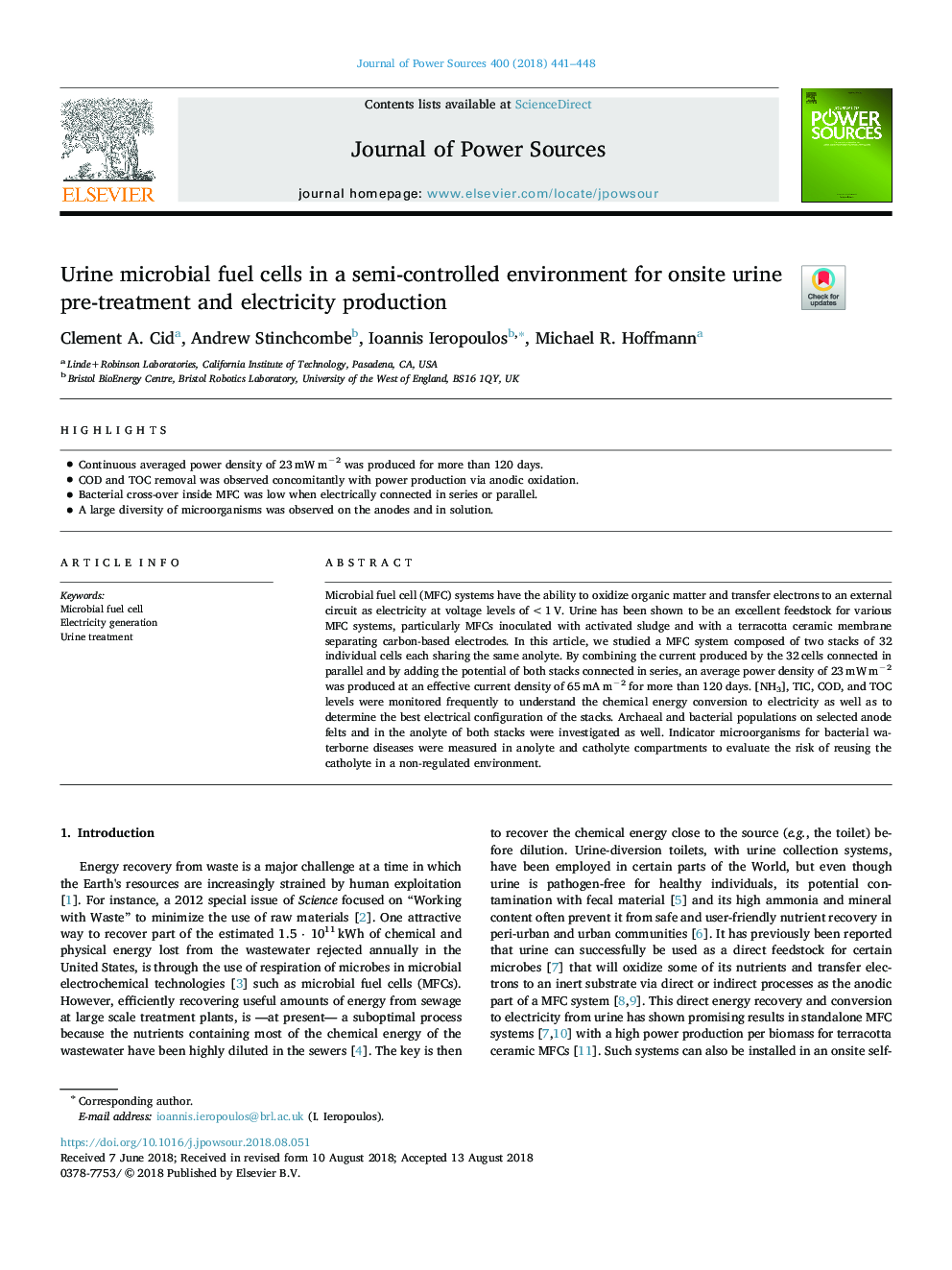| Article ID | Journal | Published Year | Pages | File Type |
|---|---|---|---|---|
| 11005926 | Journal of Power Sources | 2018 | 8 Pages |
Abstract
Microbial fuel cell (MFC) systems have the ability to oxidize organic matter and transfer electrons to an external circuit as electricity at voltage levels of <1â¯V. Urine has been shown to be an excellent feedstock for various MFC systems, particularly MFCs inoculated with activated sludge and with a terracotta ceramic membrane separating carbon-based electrodes. In this article, we studied a MFC system composed of two stacks of 32 individual cells each sharing the same anolyte. By combining the current produced by the 32â¯cells connected in parallel and by adding the potential of both stacks connected in series, an average power density of 23â¯mWâ¯mâ2 was produced at an effective current density of 65â¯mAâ¯mâ2 for more than 120 days. [NH3], TIC, COD, and TOC levels were monitored frequently to understand the chemical energy conversion to electricity as well as to determine the best electrical configuration of the stacks. Archaeal and bacterial populations on selected anode felts and in the anolyte of both stacks were investigated as well. Indicator microorganisms for bacterial waterborne diseases were measured in anolyte and catholyte compartments to evaluate the risk of reusing the catholyte in a non-regulated environment.
Related Topics
Physical Sciences and Engineering
Chemistry
Electrochemistry
Authors
Clement A. Cid, Andrew Stinchcombe, Ioannis Ieropoulos, Michael R. Hoffmann,
